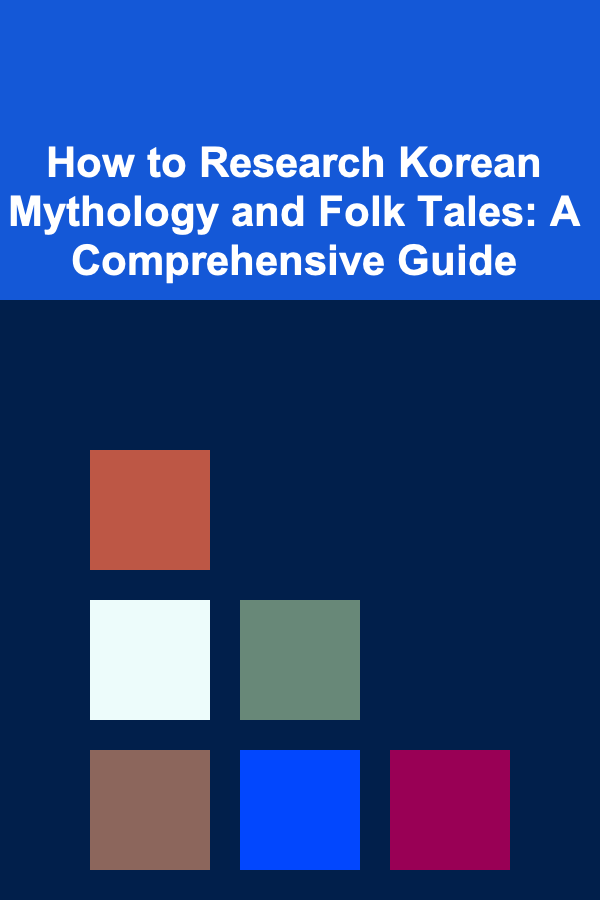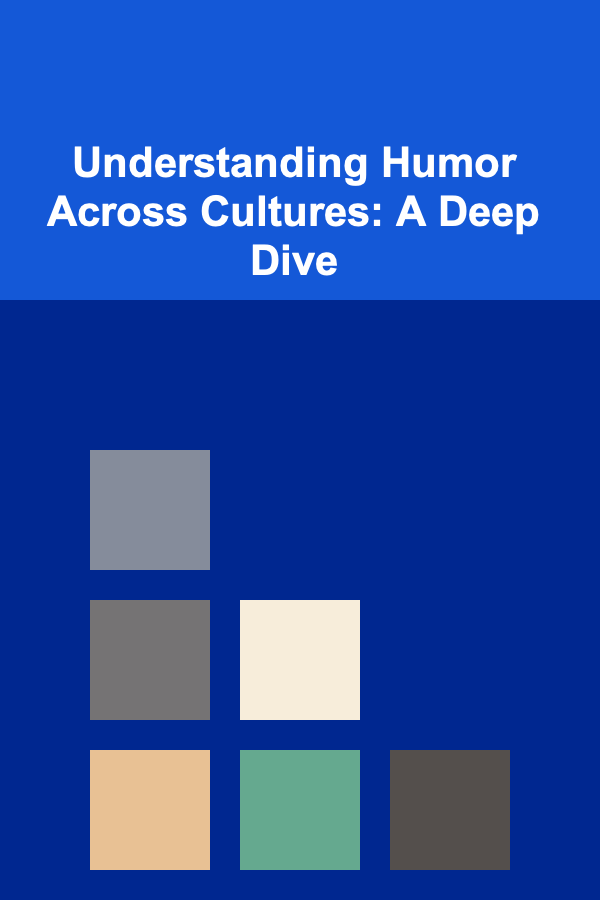
How to Research Korean Mythology and Folk Tales: A Comprehensive Guide
ebook include PDF & Audio bundle (Micro Guide)
$12.99$5.99
Limited Time Offer! Order within the next:

Korean mythology and folk tales represent a rich tapestry of cultural narratives, offering profound insights into the values, beliefs, and historical experiences of the Korean people. Delving into this world requires a multifaceted approach, blending historical research, linguistic understanding, and cultural sensitivity. This guide provides a comprehensive roadmap for researchers interested in exploring this fascinating subject, covering essential resources, research methodologies, and ethical considerations.
I. Understanding the Landscape: Defining Korean Mythology and Folk Tales
Before embarking on your research journey, it's crucial to establish a clear understanding of what constitutes Korean mythology and folk tales. While often intertwined, they possess distinct characteristics:
- Korean Mythology: These are sacred narratives explaining the origins of the world, natural phenomena, deities, and ancestral heroes. They typically involve supernatural beings, divine interventions, and the creation of cultural institutions. Myths often carry religious or spiritual significance and serve as explanations for fundamental aspects of life and the universe. Examples include the myth of Dangun (founder of Gojoseon), the creation myth of Cheonjiwang (the Sky King), and the myths surrounding various mountain spirits (Sanshin).
- Korean Folk Tales: These are secular narratives passed down through generations, often entertaining, didactic, or both. They feature ordinary people, animals, and occasionally supernatural creatures, often exploring themes of morality, social justice, and human nature. Folk tales may incorporate elements of mythology, but they typically focus on everyday life and the consequences of human actions. Examples include stories of Heungbu and Nolbu (a tale of brotherly conflict and karma), Sim Cheong (a filial daughter who sacrifices herself), and numerous animal fables.
It's important to note that the line between mythology and folk tales can be blurry, particularly in oral traditions where narratives evolve and adapt over time. Many stories may contain elements of both, reflecting the complex interplay between religious beliefs and everyday experiences.
II. Identifying and Accessing Key Resources
Successful research hinges on identifying and accessing relevant sources. Here's a breakdown of essential resources for studying Korean mythology and folk tales:
A. Primary Sources:
These are firsthand accounts and original texts that offer direct access to the narratives themselves. However, directly accessing truly "primary" sources from, say, the Gojoseon era is impossible due to the lack of written records from that time. We rely heavily on later transcriptions and reinterpretations.
- Historical Texts: Several historical texts contain fragments of mythological narratives and glimpses into ancient beliefs. Key examples include:
- Samguk Yusa (Memorabilia of the Three Kingdoms): Compiled in the 13th century by Buddhist monk Iryeon, this text is invaluable for its collection of myths and legends related to the ancient Korean kingdoms of Goguryeo, Baekje, and Silla. It contains the Dangun myth, numerous foundation myths, and stories of miraculous events.
- Samguk Sagi (History of the Three Kingdoms): Written in the 12th century, this text offers a more Confucian-oriented historical account but still includes some mythological elements and foundation stories. It is generally considered less reliable for purely mythological material compared to the Samguk Yusa.
- Jewang Ungi (Rhymed Chronicles of Sovereigns): A historical poem written in the 13th century, providing another perspective on the founding of Korean kingdoms and incorporating some mythological elements.
- Goryeosa (History of Goryeo): While primarily focused on the Goryeo dynasty, this text sometimes contains references to earlier myths and folk beliefs.
- Oral Traditions: While the earliest forms are lost to time, remnants of oral traditions have been collected and transcribed in later centuries. Modern field research continues to uncover variations of these stories.
- Gut (Shamanic Rituals): Korean shamanic rituals, or Gut, often involve the recitation of myths and legends, providing valuable insights into the roles and characteristics of deities and spirits. Studying the lyrics and performances of Gut can reveal details not found in written sources. Be cautious, however, as these are often performed for a specific purpose and may be altered to suit the context.
- Pansori: This traditional Korean narrative song form often incorporates elements of folk tales and legends, offering dramatic and engaging renditions of well-known stories.
- Collections of Folk Tales: Numerous collections of Korean folk tales have been compiled over the centuries, both in Korean and in translation. These collections offer a diverse range of stories, reflecting regional variations and different social contexts. Look for collections that include detailed annotations and contextual information.
B. Secondary Sources:
These are scholarly analyses, interpretations, and commentaries on Korean mythology and folk tales, providing valuable context and perspectives.
- Academic Books: Numerous academic books explore various aspects of Korean mythology and folk tales, covering topics such as:
- Mythological origins and symbolism
- The role of folklore in shaping Korean identity
- Comparative mythology (comparing Korean myths to those of other cultures)
- The influence of Confucianism, Buddhism, and Shamanism on Korean folklore
- Regional variations in folk tales
- The representation of gender, class, and other social categories in folklore
- Scholarly Articles: Academic journals such as Acta Koreana, Korean Studies, Journal of Korean Studies, and Asian Folklore Studies publish articles on Korean mythology and folk tales. These articles often present original research, critical analyses, and new interpretations of existing narratives.
- Dictionaries and Encyclopedias: Reference works on Korean culture and folklore can provide useful definitions, overviews, and background information. Look for specialized dictionaries of Korean mythology and folklore.
C. Online Resources:
The internet offers a wealth of resources for research, but it's crucial to evaluate the credibility and reliability of online sources.
- Academic Databases: Databases like JSTOR, ProQuest, and EBSCOhost provide access to scholarly articles and books.
- University Libraries: Many university libraries have online catalogs and digital collections that include resources on Korean mythology and folk tales.
- Government Websites: Websites of Korean government agencies, such as the National Folk Museum of Korea, may offer information on traditional culture and folklore.
- Reputable Online Encyclopedias: Wikipedia can be a starting point, but always verify information with reliable sources. Look for citations and consult the talk pages for discussions about accuracy.
- Digital Archives: Some institutions are digitizing collections of Korean folk tales and making them available online.
D. Language Proficiency:
While many translations of Korean myths and folk tales exist, language proficiency in Korean is essential for in-depth research. Translations can be subject to interpretation and may not capture the nuances of the original language. Understanding the Korean language allows you to:
- Consult original texts and documents
- Analyze linguistic features and symbolic meanings
- Engage with Korean scholarship on the subject
- Conduct fieldwork and interviews with Korean speakers
- Critically evaluate existing translations
If you lack proficiency in Korean, consider taking language courses or working with a translator who specializes in Korean literature and folklore.
III. Research Methodologies: Approaches to Studying Korean Mythology and Folk Tales
Choosing an appropriate research methodology is crucial for conducting rigorous and meaningful research. Here are some common approaches:
A. Textual Analysis:
This involves a close reading and interpretation of mythological narratives and folk tales, paying attention to literary devices, symbolism, and recurring motifs. Consider the following aspects:
- Narrative Structure: How is the story structured? What is the plot, and how does it unfold? Are there recurring patterns or motifs in the narrative?
- Character Analysis: Who are the main characters, and what are their roles and motivations? How do they interact with each other?
- Symbolism: What symbols are used in the story, and what do they represent? Consider the cultural context of the symbols. For example, the tiger often symbolizes power, courage, and sometimes foolishness.
- Themes: What are the main themes explored in the story? Consider universal themes such as good vs. evil, love and loss, and the search for meaning. Also consider themes specific to Korean culture, such as filial piety (hyo) and the importance of community.
- Cultural Context: How does the story reflect the social, political, and economic conditions of the time in which it was created? What values and beliefs are reflected in the narrative?
Example: Analyzing the Dangun Myth
A textual analysis of the Dangun myth might focus on the symbolism of the bear and the tiger, the significance of the sacred tree (Sindansu), and the role of Hwanung (son of the Sky God) in establishing a human civilization. It would explore the themes of national identity, the relationship between humans and nature, and the legitimation of Korean rule. The analysis would also consider how the myth has been interpreted and reinterpreted throughout Korean history, reflecting changing political and social contexts.
B. Historical Contextualization:
This involves placing mythological narratives and folk tales within their historical context, examining how they reflect and shape the beliefs, values, and social structures of different periods. Consider these points:
- Political and Social History: How did political events and social changes influence the development and transmission of myths and folk tales?
- Religious Influences: How did Confucianism, Buddhism, Shamanism, and other religious traditions shape the narratives?
- Economic Conditions: How did economic factors influence the themes and characters in folk tales? For instance, stories featuring poverty and social inequality might reflect periods of economic hardship.
- Regional Variations: How do folk tales vary across different regions of Korea? What factors account for these variations?
Example: Understanding the Sim Cheong Tale in Historical Context
The tale of Sim Cheong, the filial daughter who sacrifices herself to restore her blind father's sight, can be analyzed within the context of Confucian values that emphasize filial piety above all else. Examining the social conditions of the Joseon dynasty reveals the immense pressure placed on women to uphold these values, particularly in impoverished communities. Understanding the historical context provides a deeper appreciation for the tale's enduring appeal and its reflection of societal expectations.
C. Comparative Mythology:
This involves comparing Korean myths and folk tales with those of other cultures, identifying similarities and differences in themes, motifs, and narrative structures. This approach can reveal insights into universal human experiences and the unique cultural characteristics of Korea. When making comparisons, be careful not to impose Western frameworks or assume a linear progression of cultural development.
- Shared Motifs: Do Korean myths share common motifs with myths from other cultures (e.g., a great flood, a hero's journey, a creation myth)?
- Similar Deities: Are there parallels between Korean deities and deities in other mythologies?
- Cultural Exchange: How might cultural exchange have influenced the development of Korean mythology and folk tales? Consider the influence of Chinese mythology and folklore, for example.
- Underlying Structures: Can structuralist approaches (such as those pioneered by Claude Lévi-Strauss) reveal underlying patterns and binary oppositions in Korean myths and folk tales that are also present in other cultures?
Example: Comparing the Dangun Myth with Other Foundation Myths
Comparing the Dangun myth with other foundation myths, such as the Roman myth of Romulus and Remus or the Japanese myth of Amaterasu, can reveal similarities in the way cultures construct narratives of national origin. All these myths involve supernatural elements, divine intervention, and the establishment of a new order. However, the specific details and symbolic meanings of each myth reflect the unique cultural and historical contexts of the societies that created them.
D. Anthropological and Ethnographic Approaches:
These involve studying Korean mythology and folk tales in their cultural context, focusing on their social functions, ritual performances, and lived experiences. This often involves fieldwork, interviews, and participant observation.
- Fieldwork: Conduct fieldwork in Korean communities to collect oral traditions and observe ritual performances.
- Interviews: Interview elders, shamans, and other knowledgeable individuals about their understanding of myths and folk tales.
- Participant Observation: Participate in cultural events and rituals to gain a deeper understanding of the role of folklore in everyday life.
- Ethical Considerations: Be mindful of ethical considerations when conducting fieldwork, respecting the privacy and cultural sensitivities of the communities you are studying. Obtain informed consent from participants and avoid exploiting cultural knowledge for personal gain.
Example: Studying Shamanic Rituals (Gut)
An anthropological study of Korean shamanic rituals (Gut) might involve observing and participating in these rituals, interviewing shamans about their beliefs and practices, and analyzing the lyrics and music used in the ceremonies. This approach would aim to understand the social and spiritual functions of Gut and the role of mythology in shaping these rituals. It would also be crucial to approach the study with respect and sensitivity, recognizing the sacred nature of these practices.
E. Gender Studies Perspectives:
Examining Korean mythology and folk tales through the lens of gender studies can reveal insights into the roles, representations, and experiences of women and men in Korean culture.
- Female Characters: How are female characters portrayed in myths and folk tales? Are they depicted as passive victims, strong heroines, or something in between?
- Gender Roles: What gender roles are reinforced or challenged in the narratives?
- Patriarchal Structures: How do patriarchal structures influence the narratives and the representation of gender?
- Feminist Interpretations: Can feminist interpretations of myths and folk tales offer new perspectives on the stories? For example, can the story of Princess Bari be seen as a challenge to traditional gender roles?
Example: Analyzing the Tale of Princess Bari
The tale of Princess Bari, who is abandoned by her parents but ultimately becomes a powerful shaman and savior, offers a complex portrayal of female strength and agency. Analyzing this tale from a gender studies perspective can reveal how it challenges traditional patriarchal expectations and celebrates the resilience and power of women. It can also explore the ways in which the story reflects the historical role of female shamans in Korean society.
IV. Ethical Considerations: Respect and Responsibility in Research
Researching Korean mythology and folk tales requires a commitment to ethical principles, ensuring that your work is respectful, responsible, and contributes to a greater understanding of Korean culture.
- Respect for Cultural Heritage: Treat Korean myths and folk tales as valuable cultural heritage, avoiding any actions that might disrespect or misrepresent them.
- Accuracy and Objectivity: Strive for accuracy and objectivity in your research, presenting information in a balanced and unbiased manner.
- Attribution and Citation: Properly attribute all sources and give credit to the authors and researchers whose work you are using.
- Community Consultation: When conducting fieldwork, consult with local communities and respect their cultural sensitivities.
- Avoiding Stereotypes: Be aware of potential stereotypes and biases in your research, and challenge them whenever possible.
- Sensitivity to Religious Beliefs: Approach religious beliefs with respect and avoid making disparaging comments or judgments.
- Impact of Research: Consider the potential impact of your research on Korean culture and communities, and strive to ensure that your work is beneficial and not harmful.
- Preservation and Accessibility: Consider how your research can contribute to the preservation and accessibility of Korean mythology and folk tales for future generations. This might involve creating digital archives, translating texts, or supporting cultural preservation efforts.
V. Conclusion: A Journey of Discovery
Researching Korean mythology and folk tales is a challenging but rewarding journey of discovery. By approaching this subject with diligence, cultural sensitivity, and a commitment to ethical principles, you can contribute to a deeper understanding of Korean culture and its rich narrative traditions. Remember to consult a variety of sources, apply appropriate research methodologies, and always strive for accuracy and objectivity in your work. The deeper you delve, the more you will appreciate the profound wisdom and enduring appeal of these captivating stories.

How to Make Money Online as a Graphic Designer: 10 Actionable Ideas
Read More
How to Maximize Your Retirement Savings with IRAs
Read More
How to Store and Organize Craft Supplies in Your Office
Read More
How To Reduce Your Risk of Peripheral Artery Disease
Read More
How to Manage School Transitions Smoothly
Read More
Understanding Humor Across Cultures: A Deep Dive
Read MoreOther Products

How to Make Money Online as a Graphic Designer: 10 Actionable Ideas
Read More
How to Maximize Your Retirement Savings with IRAs
Read More
How to Store and Organize Craft Supplies in Your Office
Read More
How To Reduce Your Risk of Peripheral Artery Disease
Read More
How to Manage School Transitions Smoothly
Read More